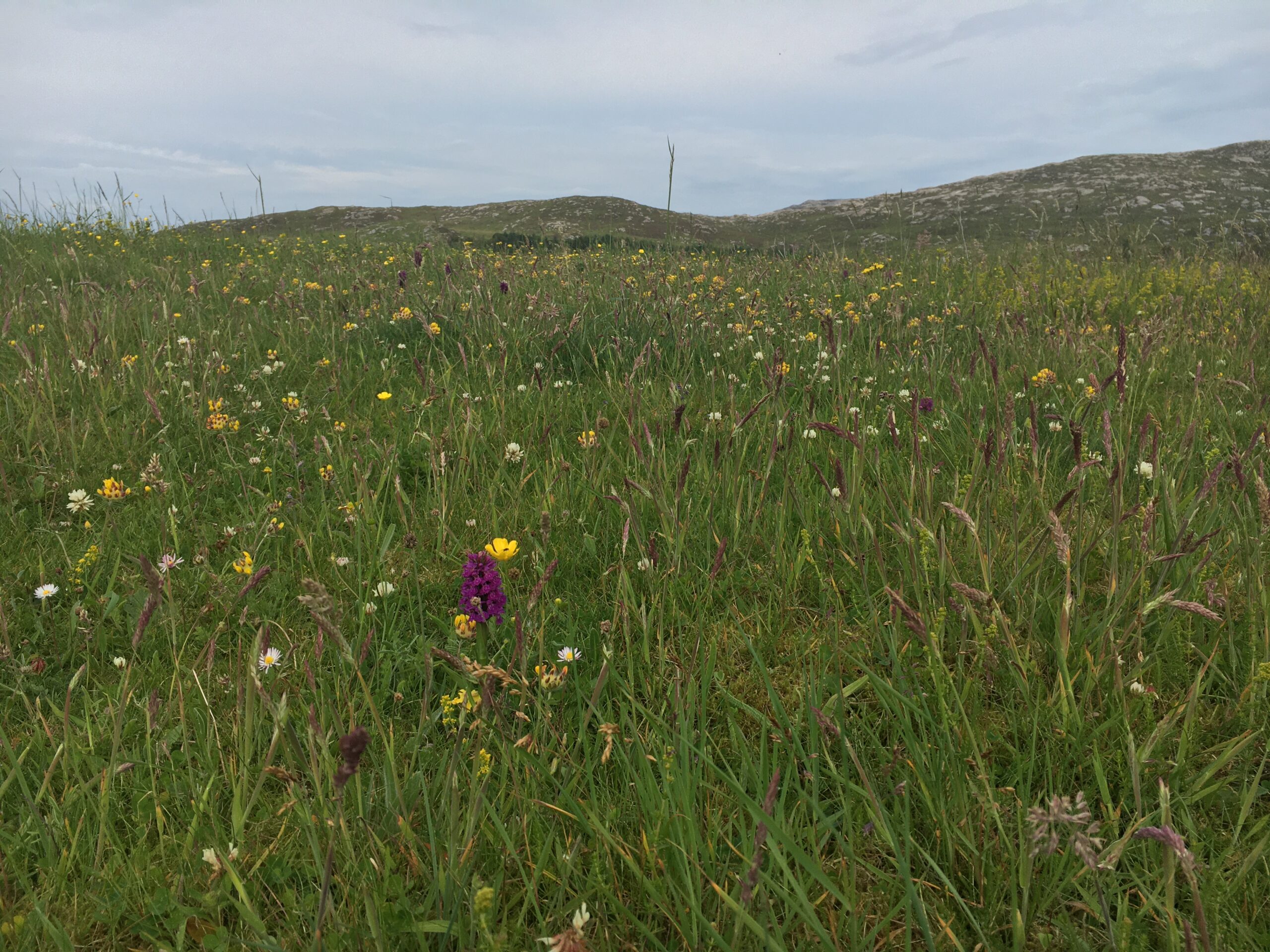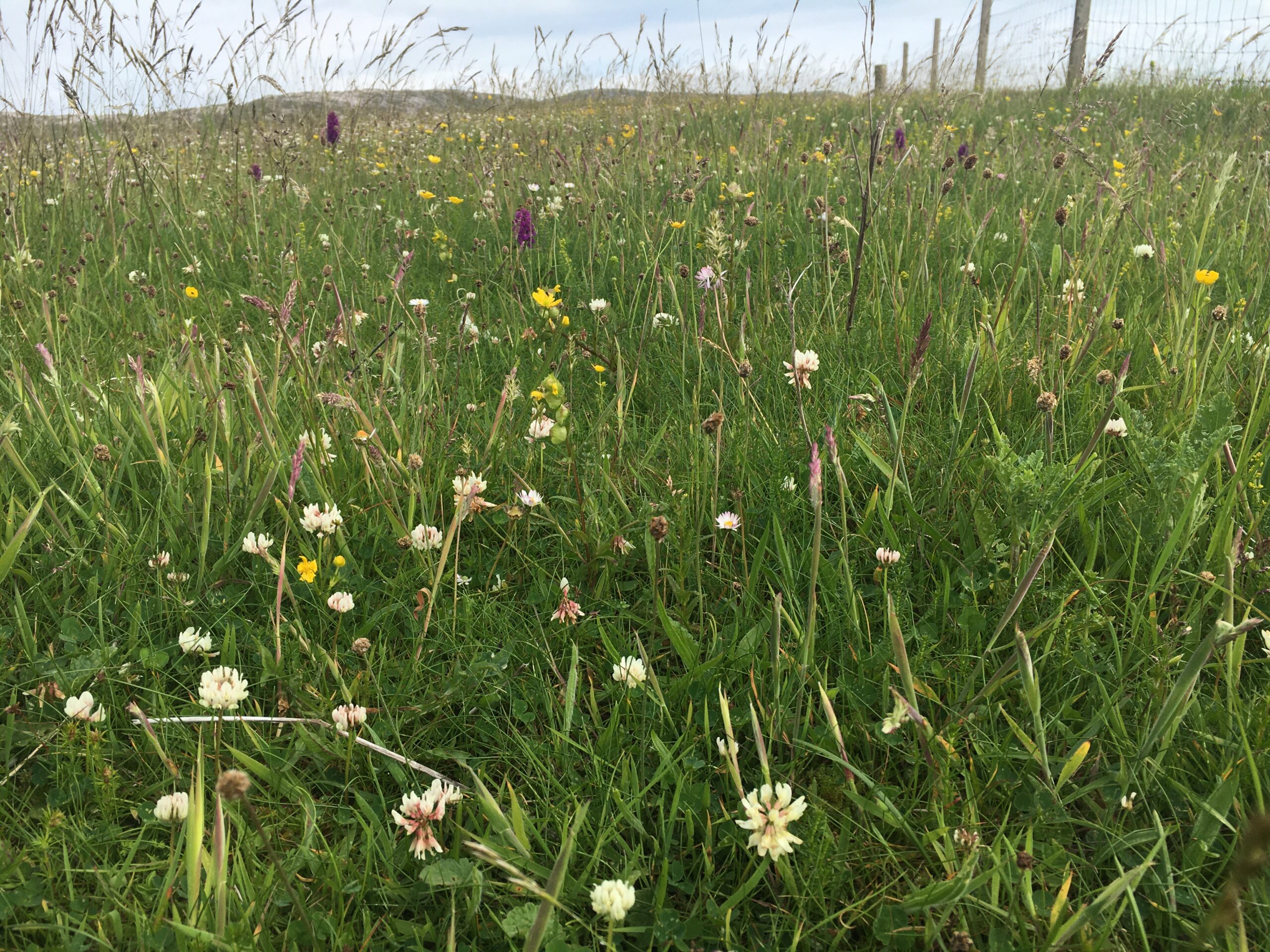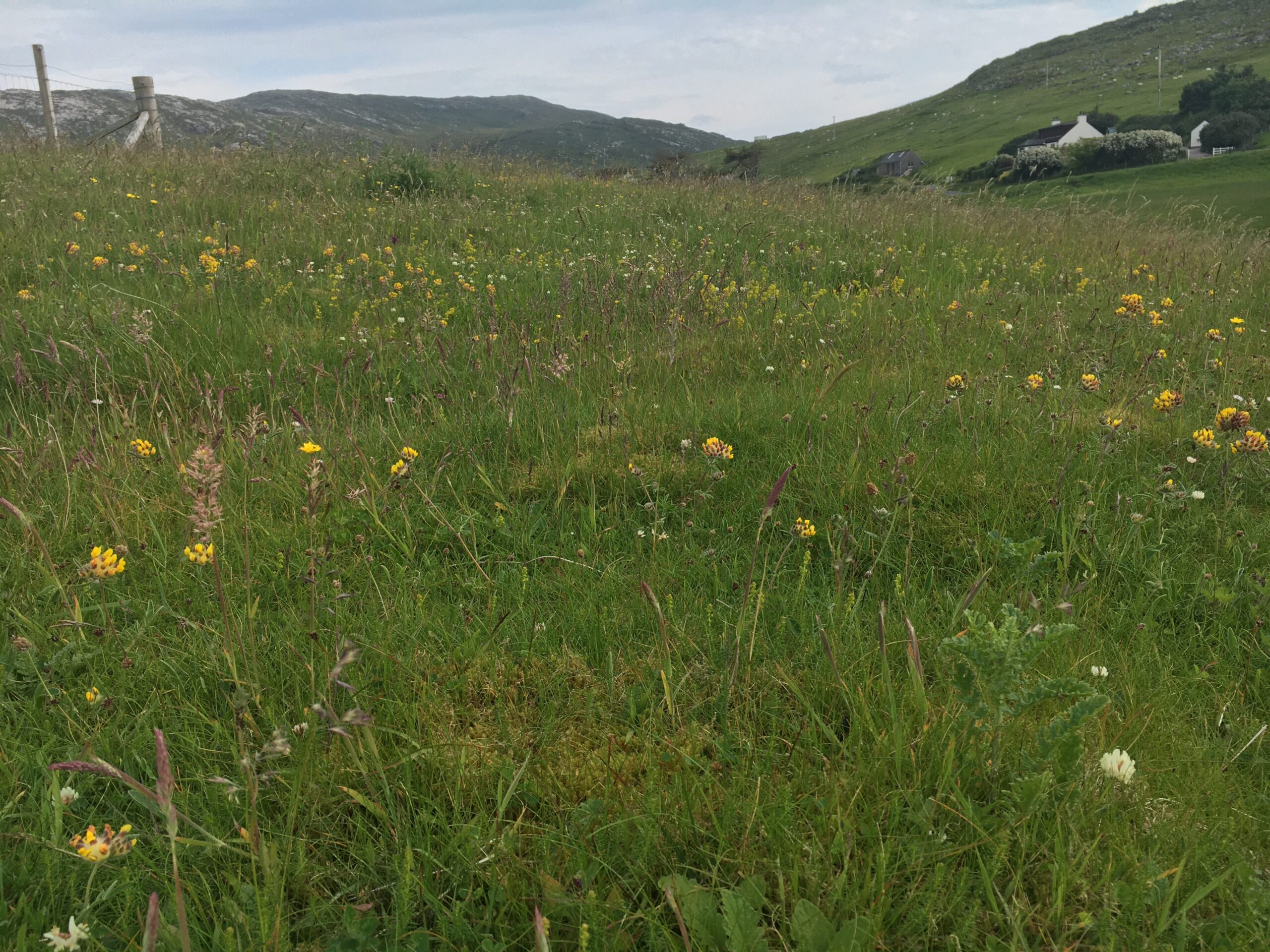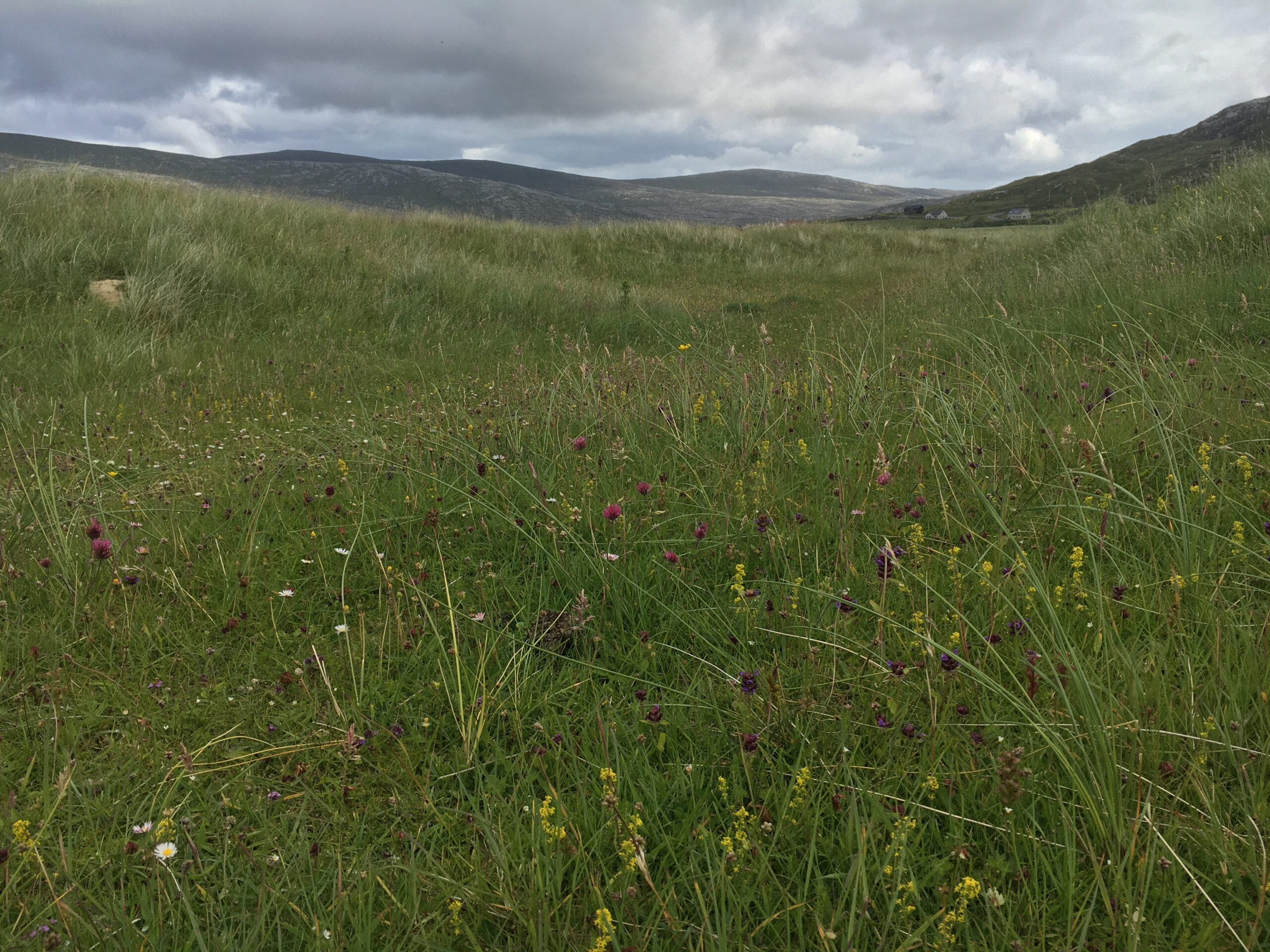The Machair on the Isles of Lewis and Harris




The machair is a unique coastal grassland habitat found primarily in the northwestern parts of Scotland and Ireland, especially along the exposed western coastlines of the Isles of Lewis and Harris. The word ‘machair’ comes from the Gaelic language, meaning ‘fertile plain.’
The machair was formed over thousands of years through the interaction of natural processes, including the deposition of shell sand by the wind and waves, and the subsequent development of dunes and grassland. The combination of these factors creates a unique alkaline soil that supports a diverse array of plant life.
The best time to visit and see the machair in full bloom is during the summer months, from late May to August. During this period, the machair comes to life with a vibrant array of colours from the various wildflowers that thrive in this environment.
Machair supports a diverse range of plant species, many of which are unique to the area. Some of the most iconic flowers found in machair habitats include:
- Irish Lady’s Tresses (Spiranthes romanzoffiana) – a rare orchid species
- Yellow Rattle (Rhinanthus minor) – a semi-parasitic plant that helps to maintain the balance of grass species
- Red Clover (Trifolium pratense) – a nitrogen-fixing plant that enriches the soil
- Eyebright (Euphrasia spp.) – a small, white-flowered plant with a characteristic red or purple streak
- Common Milkwort (Polygala vulgaris) – a low-growing plant with blue, pink, or white flowers
Farming: Machair has been used for traditional crofting and farming practices for generations. Farmers grow crops like oats, barley, and potatoes on small, fertile patches of land known as “infields.” The surrounding “outfields” are used for grazing livestock, primarily sheep and cattle. The traditional farming practices have helped maintain the unique balance of plant species in the machair ecosystem. The farmers also apply seaweed to the soil as a natural fertilizer, which replenishes nutrients and adds to the unique character of the machair ecosystem.
In recent years, there has been growing concern over the potential impacts of modern agriculture and climate change on the fragile machair habitat. Conservation efforts have been put in place to help protect and preserve this unique ecosystem for future generations.